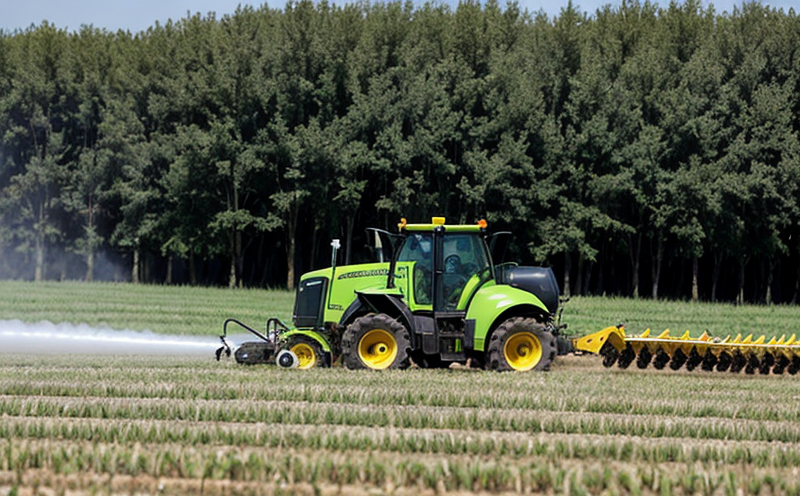Metalaxyl Residue Testing in Crops Validation Method Development Test
Understanding the presence and levels of metalaxyl residues in crops is crucial for ensuring food safety, environmental protection, and compliance with international standards. Metalaxyl is a widely used fungicide that plays an essential role in protecting plants from fungal diseases. However, its improper use can lead to residue accumulation in agricultural products, which may pose risks if not managed appropriately.
This service involves the rigorous testing of metalaxyl residues in crops using validated methods to ensure compliance with regulatory limits set by authorities like the European Commission (EC) and the United States Environmental Protection Agency (EPA). The primary focus is on developing reliable analytical methodologies that can accurately detect even minute traces of metalaxyl, thus ensuring product safety.
Our laboratory employs advanced techniques such as Liquid Chromatography-Mass Spectrometry (LC-MS/MS) and High Performance Liquid Chromatography (HPLC), which are capable of identifying and quantifying metalaxyl residues at extremely low concentrations. These instruments provide precise results that contribute significantly to the validation process.
The testing procedure typically includes several steps, starting with sample collection from various locations within a field or warehouse. Proper specimen preparation is critical; this may involve grinding, homogenizing, and extracting metalaxyl residues using appropriate solvents like acetonitrile or methanol followed by clean-up processes such as liquid-liquid extraction (LLE) or solid-phase extraction (SPE). Once prepared, the extracts undergo analysis through chromatographic separation followed by mass spectrometric detection.
The developed methods are validated according to international standards including ISO 17025 and ICH Q3D. This ensures that our results meet stringent quality control criteria required for regulatory approval. After validation, we generate comprehensive reports detailing all relevant parameters such as limit of detection (LOD), limit of quantification (LOQ), linearity range, recovery rates from spiked samples, repeatability, reproducibility, and method robustness.
Our expertise extends beyond just conducting tests; our team also assists clients in optimizing their testing protocols based on the latest scientific findings. By leveraging cutting-edge technology combined with extensive experience, we aim to provide accurate data that supports sound decision-making processes related to crop protection products.
Benefits
- Ensure compliance with international standards like EC and EPA.
- Develop reliable analytical methods for detecting metalaxyl residues at low concentrations.
- Achieve accurate identification and quantification of metalaxyl in crops.
- Evaluate the effectiveness of different extraction techniques.
- Determine optimal conditions for sample preparation.
Industry Applications
| Crop Type | Testing Frequency | Purpose of Testing |
|---|---|---|
| Fruit Crops (e.g., Apples) | Post-harvest | Evaluate residual levels after storage and transport. |
| Cereal Grains (e.g., Wheat) | Pre-harvest | Avoid contamination during harvest. |
| Vegetable Crops (e.g., Potatoes) | Field Sampling | Detect potential issues early in the growing cycle. |
Environmental and Sustainability Contributions
Metalaxyl residue testing contributes positively to environmental sustainability by helping minimize unnecessary exposure of non-target organisms to fungicides. By accurately determining the amount of metalaxyl present in crops, this service enables farmers to make informed decisions about pesticide applications, thereby reducing overall usage where possible.
Moreover, accurate residue analysis supports the development of more efficient application methods and improved crop management practices. This not only enhances yield but also reduces costs associated with over-application while maintaining effective disease control measures.





